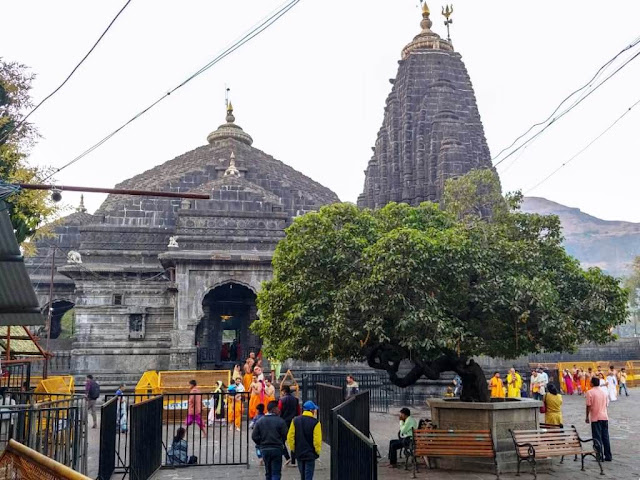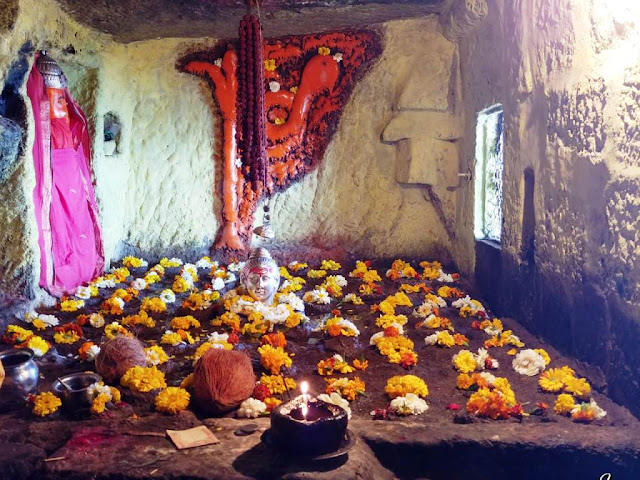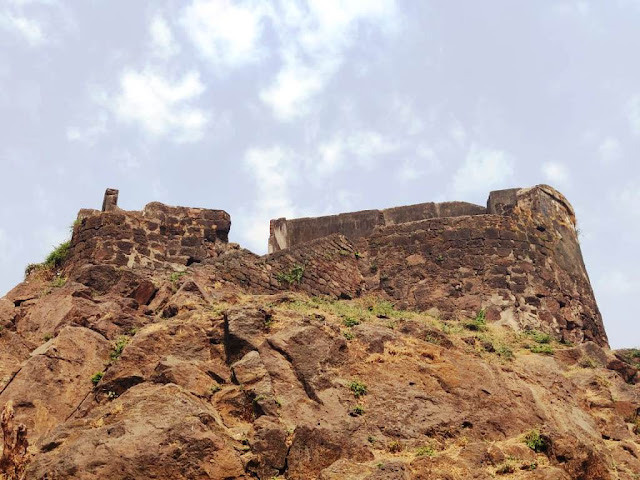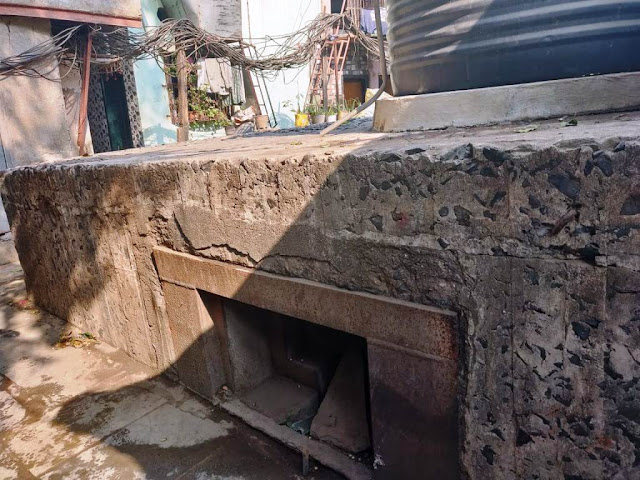Heading for the mighty Himalayas??
Are you looking for a not so touristy (and less crowds!!) destination – unlike
Manali, Shimla, Nainital.
Are you looking for a place where you can go for trekking or simple hiking?
Are you looking for a place where you can enjoy some snow and learn skiing too?
If
your answer to these questions is yes, then I have a place for you.
Snuggled
within the grand Himalayas in the Garhwal region of Uttarakhand, lies the
ultimate ski destination of India, Auli.
In literal sense, Auli means “meadows” and is situated at a height of 7500 feet
above sea level. Auli has put India on the world map for skiing.
 |
| GMVN Nanda Devi Eco Tourist Resort |
We
visited Auli in the first week of March which was the perfect time to explore the
place in all its glory. During our visit, Auli, the surrounding areas were
covered with a thick blanket of snow and the sky was clear too - giving us the
opportunity to witness and enjoy the scintillating Himalayan Peaks.
During
our stay we witnessed snowfall a couple of times. We were lucky to experience
the two aspects of Auli – the clear weather because of which we were able to
witness the snow covered mountains all around and the snowfall which is an
experience in its own.
Things to experience in Auli
Skiing in Snow
Auli
is the skiing destination in India. So when in Auli, get ready for skiing. See
how beautifully the slopes of the Himalayas are covered in glittering snow.
Professional guides and equipments required for skiing are easily available on
rent.
Auli
skiing slopes vary from 400 m to 4 kms and if you really want to learn skiing,
you can join the 15 days or a 1 month training program run by GMVN.
 |
| Auli Ski Track |
Longest & 2nd
Highest Ropeway
Auli
is connected to Joshimath (base point) through ropeway which is the longest (4
kms) and the 2nd highest ropeway in Asia. The highest Ropeway is in Gulmarg,
Kashmir and is 5 kms long!! The ropeway is run by GMVN and cost Rs 700 per
person for a return journey. You can also try the cable lift which cost Rs 300
per person and offers a spectacular view of the Himalayas.
When
we took the cable ride, it left us speechless with the calmness (not a whisper
expect for the wind whistling past) and dazzling snow covered slopes.
 |
| The Ropeway |
Highest Manmade Lake
Auli
has the highest manmade lake in the world which was created to produce
synthetic artificial snow in skiing season in case of scanty snowfall.
Sometimes in snow if there are lot of tourist in Auli, the operators produce
artificial snow for tourist delight.
During
our visit the artificial lake was covered with snow as you can see in the
picture. The mesmerizing frozen lake set against the backdrop of Nanda Devi
peak is a must visit.
 |
| Highest Manmade Lake |
360 degree view of Himalayas
Auli
provides the 360 degree panoramic view of the Himalayas. In fact if you arrive
at night, the morning view from your room is quite fascinating and touches you
to the core. During the winters the mountains are covered with thick white
blanket of snow which can make a beautiful postcard pic. Auli boasts of some of
the majestic Himalayan mountain ranges like the very famous Nanda Devi Peak,
Kamet Kamat, Trishul Peak, Maha Parbat.
The snow covered mountains left us speechless and instil a sense of calm
and serenity.
 |
| The wake up view |
Trekking
There
are many trekking routes in and around Auli. So for trek lovers and hikers Auli
is the place to be.
Here is a list of trekking routes:
Here is a list of trekking routes:
Trek
to Gurso Bugyal (3 kms)
Trek to sweet water Chattrakund Lake (4 kms)
Hiking to Kwani Bugyal via Gurso Bugyal (13 kms)
Trek to Kuari Pass (20 Kms)
Nanda Devi National Park trek from Joshimath/Auli (Difficult)
Trek to sweet water Chattrakund Lake (4 kms)
Hiking to Kwani Bugyal via Gurso Bugyal (13 kms)
Trek to Kuari Pass (20 Kms)
Nanda Devi National Park trek from Joshimath/Auli (Difficult)
A cup of coffee & maggi at
the top
Enjoy
piping hot maggi and a cup of strong coffee at the top amidst snow covered
slopes as the backdrop and the mighty Himalayas at the front. There is a small stall
just at the exit of the cable car lift center in upper Auli. Don’t miss on the
delicious maggi and the absolutely delicious coffee that he has to offer.
We
had stayed in the GMVN Ski Resort and the restaurant in the resort offer good
food. The resort also has a bar so you can keep yourself warm in the late
evening with a drink.
Other activities In Auli
Other than the activities mentioned above you can also do the following:
Other than the activities mentioned above you can also do the following:
- Camping under the million of star filled sky
- Riding ATV Bikes on the slopes of Auli
- Explore Joshimath
- Go to Hemkund Sahib and Badrinath
The
ropeway in Auli boasts of being the longest and the 2nd highest
ropeway in Asia with a total stretch of 4.15 Kms which it covers in 22 minutes.
The cart can accommodate 25 people in one go and the tariff is Rs 750 per
person for a return journey. Kids above the age of 5 years are charged full
ticket.
You
can also opt for taking a chairlift (800 m in Rs 300 per person for a return
journey) or a ski lift (500m) if you want a shorter ride. Both of them offer
stunning views of the mighty Himalayas.
Timing
for the ropeway from Joshimath:
Summers
– 8:00 am to 5:10 pm
Winters – 9:15 am to 4:20 pm
Winters – 9:15 am to 4:20 pm
How to reach Auli
By Air: Jolly Grant Airport in
Dehradun is the nearest Airport. From there you have to travel by road (Taxi or
Bus) and the distance is approximately 290 Kms. It takes 12 hours to cover this
distance.
By Train: The nearest railway station is
Rishikesh and from there again you have to travel by road. Rishikesh to Auli is
around 250 Kms. You can also take a train to Haridwar or Dehradun and then
travel to Auli by road.
By Road: Joshimath is the base point
for Auli and is well connected from major cities like Delhi, Haridwar,
Dehradun. From Joshimath there are two ways you can reach lower Auli – either
take the very famous ropeway (which can drop you at lower Auli and upper Auli
both) or go by road. The road will be closed if it had snowed heavily.
Upper
Auli cannot be reached by road. You have to either take the ropeway or trek up.
Best time to visit Auli
The
best time to visit Auli depends on what you are looking for in your vacation.
If you want to enjoy snow, try skiing then plan your visit anytime between November
and March.
If
you are looking for a respite from the scorching heat in the plains, April to
June is the perfect time to visit Auli. In summers, the weather is clear and
you can enjoy clear view of the Himalayan Peaks and treks in the lush green surrounding
areas.
The
monsoon in the region starts from July and scanty rains continue till October.
This is the period where I will request you to avoid travelling in the Hills due to increased risk of
accidents and landslides.
 |
| GMVN Resort in Lower Auli |
Where to stay in Auli
Auli
has not been commercialised yet and thus have few stay options – Cliff Top
Club, Himalayan Ecolodge and Garhwal Government (GMVN) run accommodation. GMVN
has two stay options in Auli namely, GMVN Auli Ski Resort (Lower Auli) and GMVN
Nanda Devi Eco Tourist Rersort (Upper Auli)
All
these options are comparatively expensive, the most economical being GMVN
Tourist Guest House which can be booked online through their website http://gmvnl.in/
If
you want a cheaper stay options you can stay at Joshimath which has a plethora
of budget stay options and visit Auli on day tour.
Some Tips:
- Accommodation in GMVN is highly recommended. Book your stay early using the GMVN website as the resort.
- In GMVN Auli you can contact Mr. Kamal Kishore – 9568006629 for all your queries. He is a jovial person and will assist you.
- No matter what the season always keep some woollen clothes with you. If you are visiting in winters the temperature easily goes below zero so be adequately prepared.
- We had travelled by Nanda Devi Express (Train No. 12205) from New Delhi to Haridwar and then booked an Innova to take us to Auli. The train departs from New Delhi at 23:50 and reaches Hridwar at 03:52. While coming back we again took Nanda Devi Express (Train No. 12206) from Haridwar at 23:30 and reached New Delhi at 05:20
- We had booked Innova from Haridwar to Joshimath and return with Car Rental In Haridwar. You can check the website on www.carrentalinharidwar.com
- During your drive to Joshimath you will cross the four prayags (sacred river confluence as per Hindu religion) out of the five prayags – Nanda Prayag, Karn Prayag, Rudraprayag and DevPrayag. The fifth prayag i.e. Vishnu Prayag is a short drive away from Joshimath, if you have time please stop over at the prayags and enjoy the sacred convergence.
 |
| The day after - Icicles |
We
did our entire trip from Mumbai – Delhi – Haridwar – Auli and back in four
days. The fifth early morning we took a flight back from New Delhi to Mumbai
and were in our respective offices in the morning. Ours was a very packed trip
which is not recommended. We were in Auli for only one day which is a very
short time.
 |
| Finally a dash of colour |


























